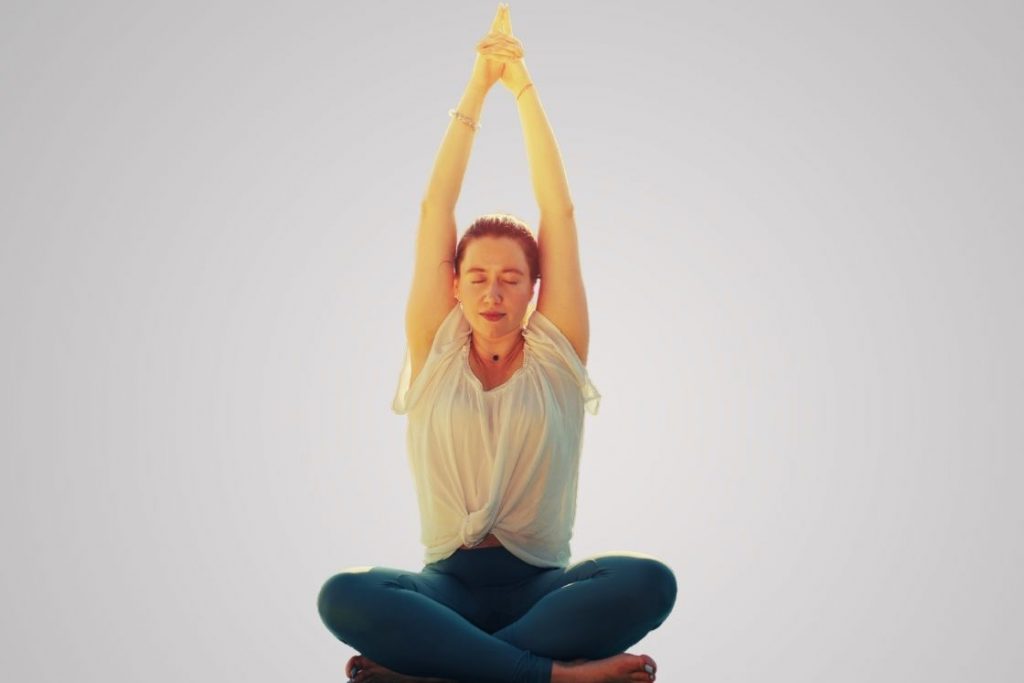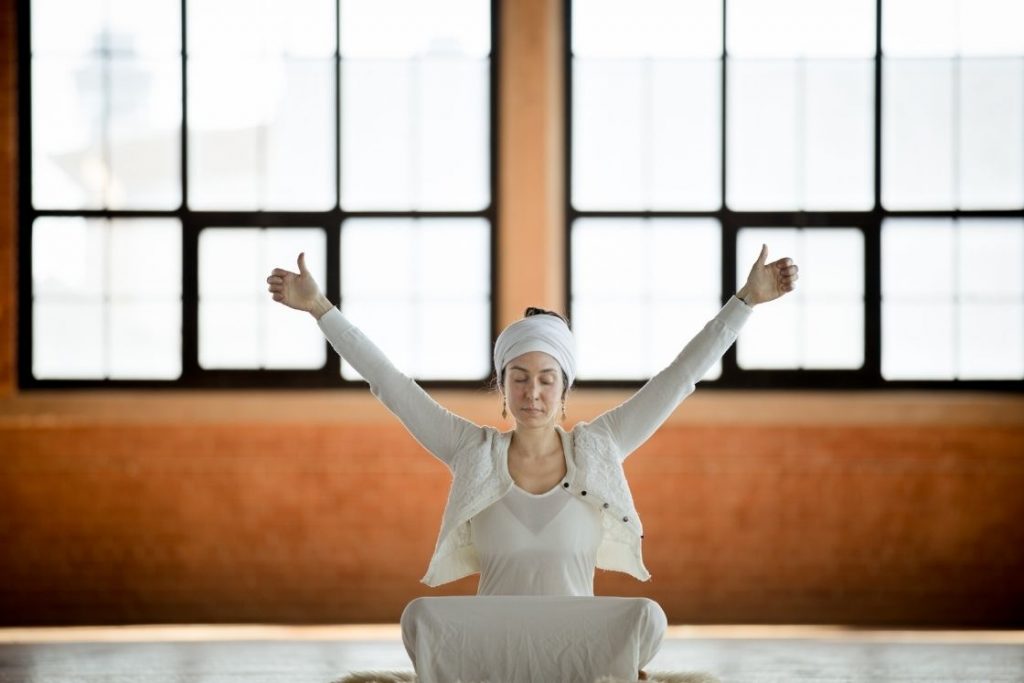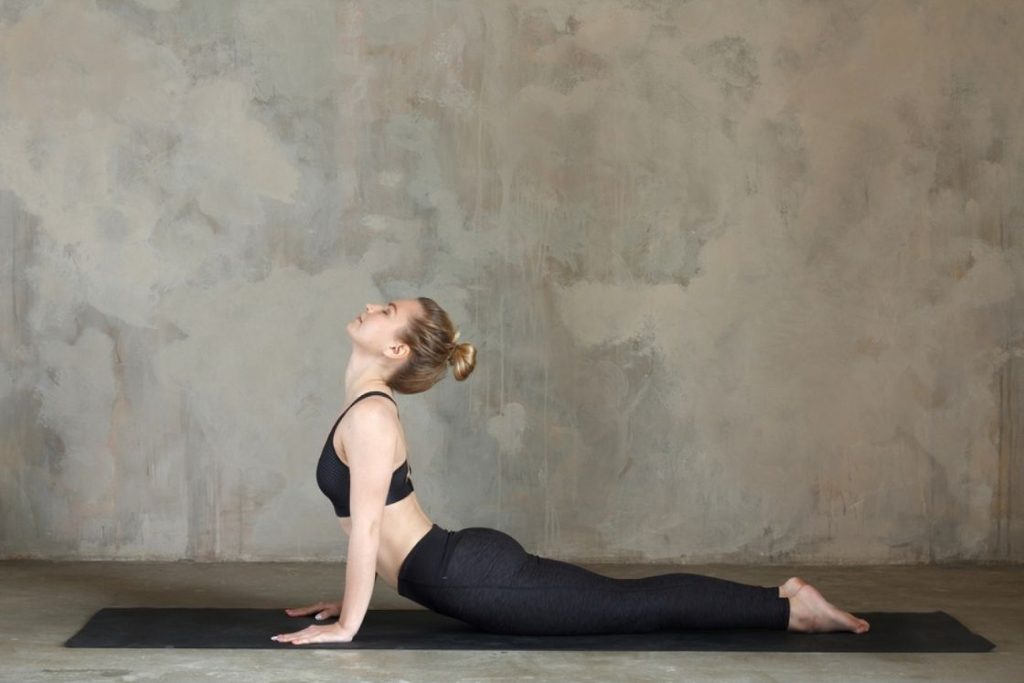
Any movement performed during Kundalini Yoga practice can be referred to as a kriya.
Kundalini kriyas involve breathing techniques, chants, and physical movements that help awaken the kundalini shakti from its dormant state.
In Kundalini Yoga, introduced to the West by Yogi Bhajan in the 1970s, kriyas follow specific instructions and are practised to achieve a definite outcome.
When practised diligently, Kundalini kriyas unblock and activate the chakras, subtly or directly transforming the body and mind of the practitioner. They also target organs such as the liver, spine, stomach, intestines, and eyes.
These kriyas are practised in the same way Yogi Bhajan taught them, following the guidance of Kundalini teachers. A typical Kundalini Yoga class begins with an opening mantra, followed by a warm-up, performing a kriya, and concluding with meditation.
You may often see Kundalini Yoga practitioners wearing white clothing and a white turban, but this is not mandatory. Wearing white is suggested because it is believed to ward off negative energy and strengthen the aura.
White is also a symbol of peace, which may help promote a calm and focused mind when practising kriyas.
By practising kundalini yoga kriyas, one can awaken the dormant kundalini energy that lies at the base of the spine in root chakra. In its awakened state, the energy travels through the spine to the crown of the head, activating the seven chakras.
This process enhances self-awareness and encourages the free flow of prana energy.
In the following section, we have mentioned 10 common kriyas that are often performed by practitioners. It is important to focus on your breath, gaze and sounds you make during the kriya as they help in unblocking energies and increasing focus.
1. Breath of fire

The Breath of Fire is an essential and integral part of Kundalini Yoga kriyas.
This kriya is a breathing technique that generates inner heat, aiding in detoxification and energizing the mind and body. In Breath of Fire, you inhale passively and exhale forcefully without pauses. The pace and length of each breath should be equal.
Breath of fire kriya works on stimulating the Solar Plexus chakra which is the seat of willpower, determination, and inner strength.
Follow the steps below to perform Breath of fire kriya;
- Sit in a cross-legged yoga pose, prefeabbly; lotus pose or easy pose or thunderbolt pose. Sit tall with your back upright.
- Place your palms on the knees, either in Gyan Mudra or simply palms opens facing upwards.
- Engage your belly and inhale through your nose. You should feel your belly and diaphragm expanding.
- Without any pause, exhale forcefully. Your abdomen and diaphragm should snap back into the spine.
- Make sure the length of inhaling and exhaling are equal. Establish a rhythm and repeat the process for at least 30 seconds.
- Gradually increase the time limit to 5-10 minutes.
Once you have finished practising BOF, come back to stable breathing.
This breathing kriya is generally performed at the beginning of the kundalini yoga class to warm up internally.
2. Sat kriya

Sat Kriya is one of the fundamental kriyas of Kundalini Yoga. According to Yogi Bhajan, practising Sat Kriya for just three minutes a day can provide the benefits of an entire yoga class.
The kriya is named Sat Kriya because it involves chanting Sat Nam in sync with the breath. Sat (pronounced sut, as in “cut”) means truth, honesty, or righteousness, while Nam (pronounced naam, as in “calm”) means name. Chanting Sat Nam is a way of invoking the divine and aligning with the truth within yourself.
Sat Kriya directly stimulates the awakening of Kundalini Shakti. It gently massages the internal organs, regulates blood pressure, and strengthens the heart. Additionally, it fosters the awakening of sexual energy and promotes deep relaxation.
The three lower chakras Root, Sacral, and Solar Plexus—are stimulated simultaneously, helping to calm the mind and improve focus.
Follow the steps below to perform Sat kriya.
- Sit in a Vajrasana or Rock Pose. Your back should be straight, knees together and the top of your feet should be on the ground.
- Stretch both your hands overhead and join your palms. Your upper arms should be touching your ears and your elbows should not bend.
- Interlock all your finger except the index fingers of both hands. Ideally, females should cross the left thumb over the right and males should cross the right thumb over the left. This hand position is called kali mudra.
- Start chanting Sat Nam in a constant rhythmic manner 8 times in 10 seconds.
- On inhalation, pull your navel in and up towards the spine, chant Sat. While exhaling, chant Nam and relax the belly.
- You do not need to engage any locks or bandhas as root and the diaphragm locks are automatically engaged when you breath. Throughout the process of chanting, your spine stays straight.
- Focus your gaze on the middle of the brows with your eyes closed.
If you are a beginner, do sat kriya for at least 3 minutes. Gradually increase the time to 31 minutes.
At the end of 3 minutes, inhale deeply and squeeze the muscles from the buttocks past the shoulder blades. Hold your breath for a few seconds while focusing on the Crown Chakra and then exhale completely.
As soon as you end the Sat Kriya, you should follow it up with a long deep relaxation. The typical time for relaxation is twice the length of time the kriya was practiced. This relaxation time is a must as it will give time for your body to assimilate with itself.
Note: Sat kriya of kundalini yoga shouldn’t be misunderstood with Shat kriyas of Hatha Yoga. In kundalini yoga, sat kriya is a chant synch with breathing movement whereas in hatha yoga shat kriya (shat means 6) is called to the collection of 6 yogic kriyas used for internal body cleansing.
3. Ego eradicator

As the name shows, Ego Eradicator kundalini kriya is practised to bring that openness in the heart which removes the sense of I-ness and calms the mind.
Ego Eradicator kriya is performed by opening the arms up & sideways. Then with this arms position Breath of Fire is performed. This is a very popular kriya among kundalini yoga practitioners.
Practicing the ego eradicator will open your heart and balance the two hemispheres of the brain. It will cleanse and strengthen the lungs and improve spinal strength as well.
Moreover, this kriya will also balance your chakras, ensuring a smoother flow of prana energy. This will promote mental clarity, awareness, alertness, and calmness.
Follow the steps below to do this kriya.
- Sit in an Easy Pose (Sukhasana).
- Stretch your arms overhead at an angle of 60-degrees. Curl your fingers so that the fingertips touch the base of the fingers. Keep the thumb extended and pointed towards the sky.
- Close your eyes and focus on the Third Eye Chakra.
- Begin Breath of Fire and continue for 1-3 minutes.
- At the end of the kriya, join the thumbs at the tips on an inhale and apply the root lock on exhale. Take another inhale and relax your body on exhale.
4. Spinal stretch
This kriya is similar to the Cat-Cow pose in Hatha Yoga. The only difference is that you will be practising the spinal stretch in a seated position. Through the spinal flex kriya, you can reduce the tightness and stiffness in the spine.
Doing spinal stretch will ensure that, physically, there is an uninterrupted flow of the spinal fluid from the brain to the spine. Spiritually, all the chakras will be stimulated and promote a free flow of prana.
- Sit in an Easy Pose (Sukhasana) with eyes closed.
- Hold both your shins or knees.
- Inhale and flex your spine forward and open your chest. Exhale and flex the spine backward.
- At any time, the shoulders should not touch your ears and be relaxed. Also, be aware of keeping your head straight.
Repeat the exercise for 3 minutes.
5. Spinal twist
The spinal twist exercise effectively loosens your spine, especially lower and mid-spine. It releases any stiffness or stress in the spine and back muscles, strengthens the lungs and cleanses your aura.
- Sit in an Easy Pose (Sukhasana).
- Place your hands on your shoulder, fingers in the front and thumb at the back. Your upper arms should be parallel to the ground and elbows should be in line with the shoulders.
- Twist to the right as you inhale and then on the left as you exhale. While twisting, your head and spine will remain straight. Chant Sat on inhale and Nam on exhale.
- Do not be stiff. Allow your back and head to easily twist with the flow.
Repeat the exercise for 1-3 minutes.
6. Stretch pose
The stretch pose is a challenging and advanced exercise that often causes problems to the practitioners. But if you are aware of your breath and focus on drawing your strength from the navel center, you will be able to easily conquer this pose.
This pose works on the entire body. It resets the nervous system, strengthens the abdominal organs, purifies and rejuvenates the blood. The stretch pose also focuses on the third eye chakra which calms your mind and enhances your self-esteem.
Women can especially benefit from this pose as it strengthens the reproductive organs.
If you are a beginner, do not force your body to hold the pose for 3 minutes. If you cannot hold the pose for more than 10 seconds, it is fine to let go of the position and relax for a few seconds. Start again after relaxing. You can gradually increase the time while alternating between holding the pose and relaxing for a few seconds.
- Lie down on your back.
- Lengthen the back of your neck and lift your head and upper chest together. Draw your chin in to keep the head straight and lengthened.
- Lift your lower leg, keeping the lower back on the ground, approximately 6 inches from the ground. Fix your gaze in the tips of your toes.
- Keep your hand stretched out in front of you with palms down but not touching your body. You can also place them beside you, with palms facing inwards and not touching the ground or your body.
- If you feel any discomfort in your lower back, place your hands under your buttocks for support or lightly rest the heel on the ground.
- Practice Breath of Fire in this pose.
7. Front life nerve stretch
The Life Nerve Stretch in Kundalini Yoga is the same as the Seated Forward Bend (Paschimottanasana) in Hatha Yoga. This exercise strengthens the legs and pelvis while stimulating the sciatic nerves. The forward fold also promotes spinal lengthening and strengthening.
- Sit with your legs stretched out in front of you.
- Grab your big toes with your finger. Wrap the index and middle finger around the toe and press the toenail with the pads of your thumb.
- With an elongated spine, engage your navel and bend forward while exhaling. On the next inhale, push up with the strength of your legs and the navel. In both cases, the head follows last.
- Continue this exercise for 1-3 minutes while breathing deeply.
8. Cobra pose

The practice of this pose is similar to Hatha yoga but the intention to perform is slightly different. In Kundalini Yoga, the cobra pose is practised to balance the apana. It also increases the prana energy flow so that the energy circulates towards the higher centres.
By focusing on the Apana, it also stimulates and balances sexual energy.
- Lie down on your stomach and place your forearms beside your ribs. Keep your legs joined together.
- Bring your hands below your shoulders and spread your fingers to create a firm support and spread the weight evenly.
- Inhale and lift your head, chest and spine upwards while keeping your pelvis and legs on the mat. Keep your shoulder away from your ears and shoulders blades pressed towards the back.
- Stay in this pose for 1-3 minutes while practicing Breath of Fire.
- On the next inhale, stretch your spine to the maximum. Hold your breath in the next exhale and apply the root lock. Inhale and exhale while slowly coming down to lie down on the mat completely.
9. Archer pose
Physically speaking, the archer pose will strengthen your quads, legs, knees, shoulders, and arms. Internally, it will stimulate the third eye chakra and promote feelings of fearlessness, willpower, and determination.
- Start by standing in the Tadasana (Mountain Pose).
- Step your left foot to the back by approx. 3 feet. Place your left heel on the floor and turn the toes to a 45-degree angle. Your left leg should be straight.
- Bend the right knee so that your thighs are parallel to the floor and your knee is in line with the ankle. Make sure your right foot heel is in line with the arch of the left foot.
- Curl the fingers of both hands into your palm except the thumb. Put your arms in front of your with this hand formation.
- Pull your left hand back so that the fist is near the left shoulder as if you were pulling the arrow from the bow. Your right arm should be parallel to the ground and both the shoulders should be in line.
- Focus your gaze on the tip of your right-hand thumb.
Practice this pose for 3 minutes on each leg.
10. Deep Relaxation
Just as a Hatha Yoga session ends with Savasana (Corpse Pose), Kundalini Yoga also incorporates a deep relaxation technique. The purpose is similar to allow the body to absorb and enjoy the changes brought about by the kriyas. You can bask in the rejuvenating energy of your aura and let your body fully relax.
Simply lie on your back with your arms by your sides, palms facing up. Close your eyes and relax for 11 to 15 minutes..
Conclusion
The kriyas mentioned above are just a few among the many Kundalini Yoga kriyas taught by Yogi Bhajan. By stimulating and activating the chakras and prana energy flow, you allow the Kundalini energy to align and rise upward.
By combining breath, gaze, and sound, you also activate the third eye and crown chakras, fostering a connection to divine consciousness the ultimate goal of any yoga practice.




